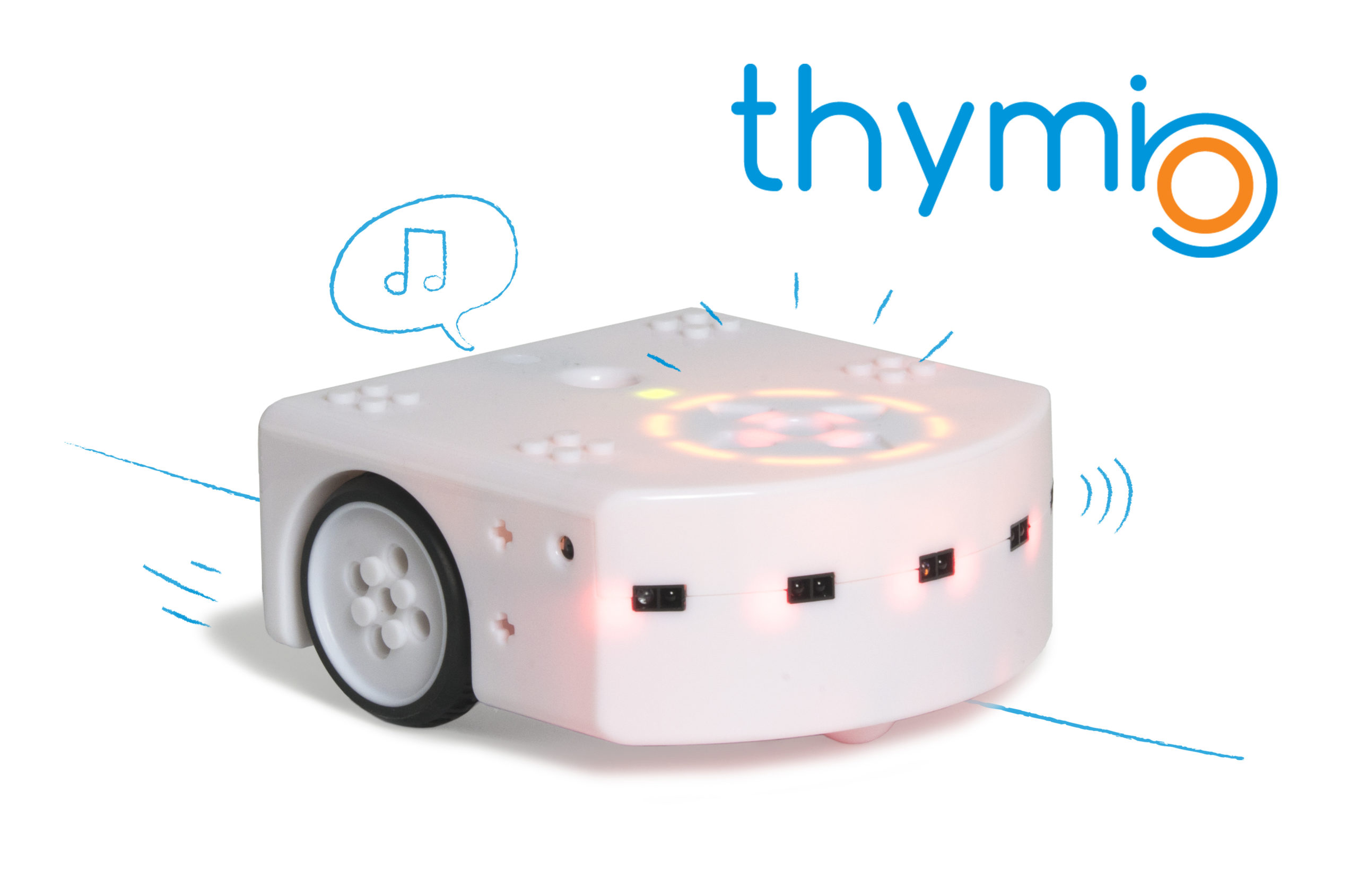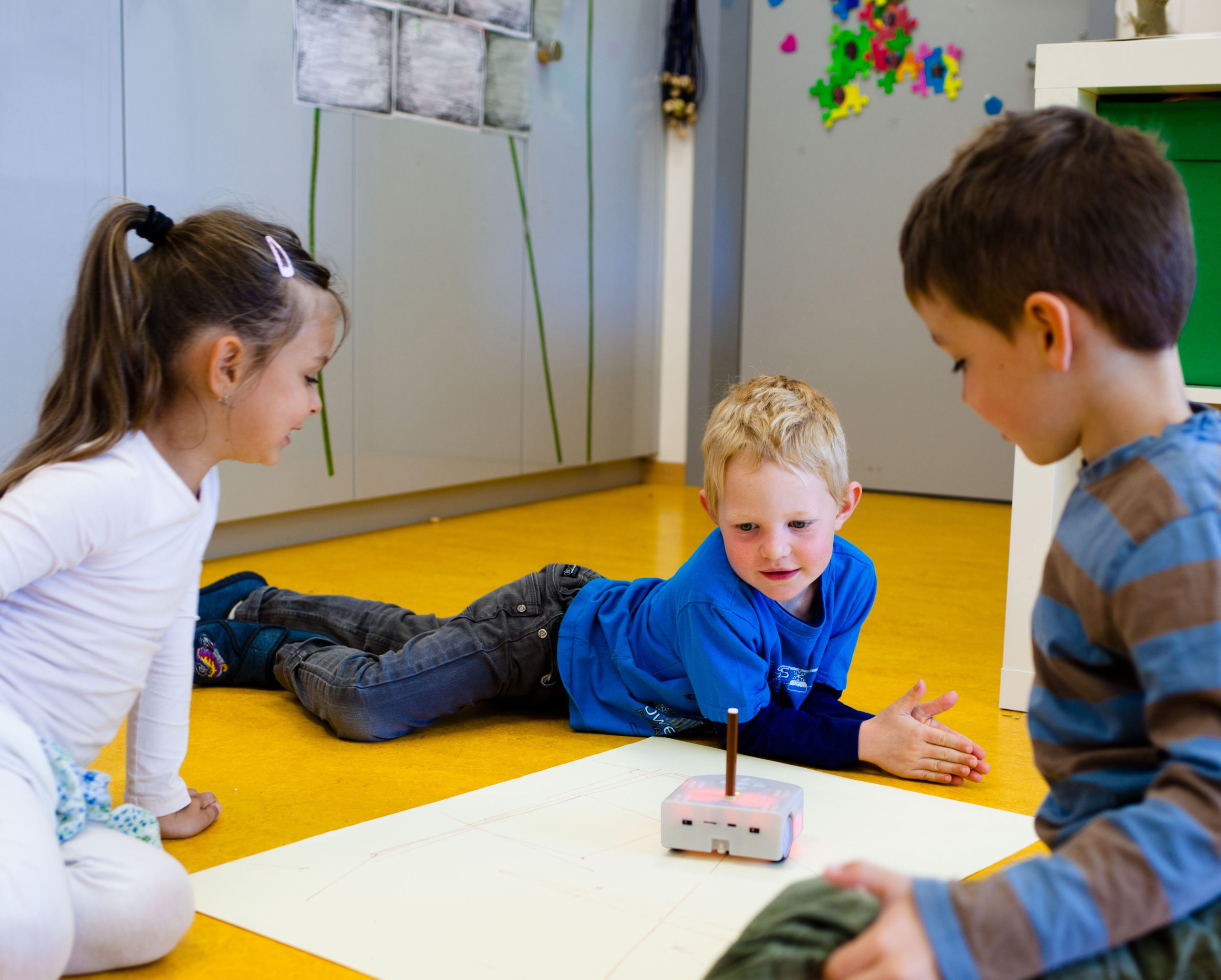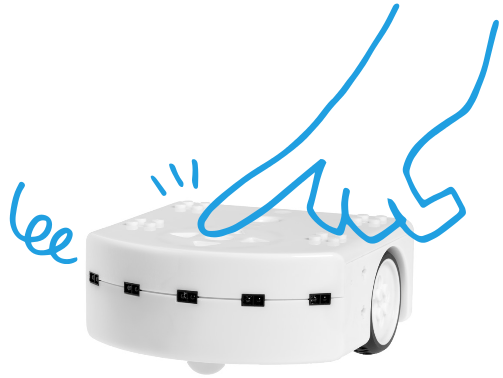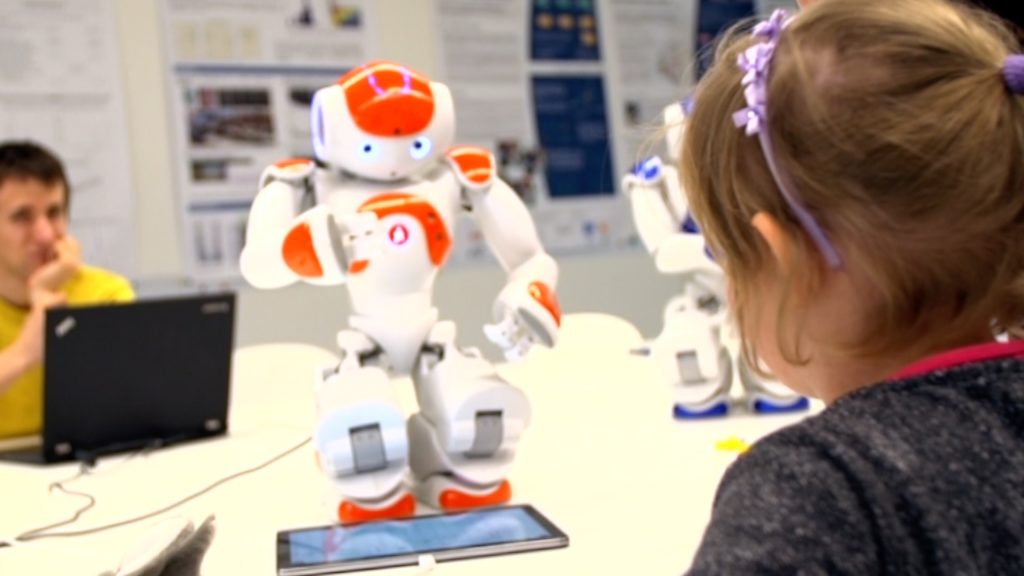Thymio
NCCR Robotics promotes robotics in schools and amongst teachers; we worked with teachers in Switzerland to prepare them to be able to confidently and effectively educate students to technologies in general, and to robotics in particular.
Thymio is a small robot created out of NCCR Robotics, which has been widely used successfully in schools across Switzerland and in many parts of Europe. With Thymio, students can discover the universe of robotics and learn a robot’s language. Thymio is programmable and can carry out numerous experiments, making the basics of robotics and programming easily accessible at whatever age.
Thymio’s classroom-related material, including educational documents based on Thymio as well as Thymio MOOC is a particularly useful pedagogic support for classroom use according to student’s age, learning objectives and topics. A community of teachers using Thymio and other robots has been created around the ROTECO platform. Thymio also offers the fun and engaging topic based papercraft activities.






Related publications
- Mussati, C. Giang, A. Piatti and F. Mondada, “A Tangible Programming Language for the Educational Robot Thymio,” 2019 10th International Conference on Information, Intelligence, Systems and Applications (IISA), Patras, Greece, 2019, pp. 1-4.
Bringing robots in schools
NCCR Robotics collaborated on a project, supported by the canton of Vaud, which aimed at introducing computer science and computational thinking in schools (about one hour per week, from 4 to 18 year-old, by a set of pilot studies over all ages in the next 5 years). Over the course of the project, these experiences involved about 10’000 teachers. EPFL lead the design, piloting and deployment in the form of teacher training.
A first phase has been devoted to preparing the tools and launching teacher training. In the canton of Vaud, 10 schools have been selected and all 350 primary school teachers (children age from 4 to 8 y.o.) of these schools have been trained in activities that present concepts of computer science with robotic activities.
The role of the NCCR Robotics in this project was to support robotic activities and to analyze the process from a research point of view. Data collection through questionnaires have been performed over the year. In the second year of the project, while the rest of teachers completed their training, a second cohort of approximately 180 primary school teachers (teaching grades 5–6) participated in the training program.

Related publications
- El-Hamamsy, F. Chessel-Lazzarotto, B. Bruno, D. Roy, T. Cahlikova, M. Chevalier, G. Parriaux, J. P. Pellet, J. Lanarès, J. Dehler Zufferey and F. Mondada, “A Computer Science and Robotics Integration Model for Primary School: Evaluation of a Large Scale in-service K-4 Teacher-Training Program”, Teaching and Teacher Education, 2020.
- Shahmoradi, J. K. Olsen, S. Haklev, W. Johal, U. Norman, J. Nasir and P. Dillenbourg, “Orchestration of Robotic Activities in Classrooms: Challenges and Opportunities”, European Conference on Technology Enhanced Learning (ECTEL), 2019, pp. 640–644.
- Shahmoradi, A. Kothiyal, J. K. Olsen, B. Bruno and P. Dillenbourg, “The Teacher and Robot: What Teachers Need for Orchestrating Robotic Classrooms”, European Conference on Technology Enhanced Learning (ECTEL), 2020, pp. 1-14.
- Mehrotra, C. Giang, N. Duruz, J. Dedelley, A. Mussati, M. Skweres and F. Mondada, “Introducing a Paper- Based Programming Language for Computing Education in Classrooms”, ACM Conference on Innovation and Technology in Computer Science Education (ITiCSE), 2020, pp. 180–186.